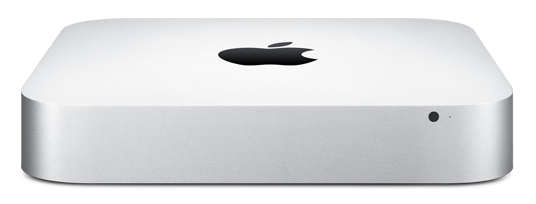Using PernixData to accelerate virtual OS X desktops


When a customer asked if it would be possible to test out some Apple OS X desktops on our vCloud platform, we figured there was only one way to find out.
To start with, we decided to build a small cluster using the Mac Mini. Apple hardware has to be used to run OS X VMs?—?a check for the Apple System Management Controller is made before a VM can be powered on. This can be seen by looking at https://esxi-hostname-or-ip/mob/?moid=ha-host&doPath=hardware.

Warning: the Mac Mini is not officially supported by VMware!
However, as detailed in William Lam’s helpful series of articles (found here: http://www.virtuallyghetto.com/apple) this won’t necessarily stop things from working. 🙂
The first question that popped into our minds was?—?could we connect the Mini cluster to a LUN on our iSCSI SAN, and then use PernixData FVP™ to provide server-side storage acceleration? Again… there was only one way to find out. One of our engineers took on the fiddly challenge of replacing the 1Tb disk in each Mini with the same Intel S3700 SSD used in the ‘normal’ hosts elsewhere on the platform?—?after that we were ready to test.
Here is a Mini sitting (temporarily!) on a datacenter floor, shortly after the ESXi install. Note the Thunderbolt Ethernet adapter sitting on top of the Superdrive?—?this is used to provide a second NIC. For the install, we used the prebuilt ESXi image available from the virtuallyGhetto site: http://www.virtuallyghetto.com/2014/09/how-to-build-custom-esxi-iso-for-apple-mac-mini.html

Looking good so far! The next step was to install into the rack?—?we’re using the Sonnet RackMac Mini.
After that, configuration proceeded as normal?—?standard host configuration, the creation of a new vCenter & PernixData cluster, and preparing the hosts within vCD completed without any problems. We were finally in a position to build some OS X VMs!
Please note that as of the time of writing, OS X 10.10 (Yosemite) has not been certified by VMware as a supported guest operating system?—?this is likely to be added in future, so keep an eye on the VMware Compatibility Guide to find out when this changes.
However?—?as with the hardware?—?this doesn’t mean it won’t work. 🙂

Three OS X VMs, provisioned via vCloud Director, in all their glory. As detailed in the VMware Guest Operating System Installation Guide, the method of getting an OS X 10.9 VM is to install 10.8, then upgrade. This is the method we used to create our templates?—?these are just the vanilla install, with the addition of VMware Tools and with both energy-saving options and the screensaver disabled (this uses large amounts of CPU if left enabled!)
This has been an interesting project?—?while it’s important to understand the limits of your vendor support, we can confirm that everything is running smoothly so far.

Question?
Our specialists have the answer
